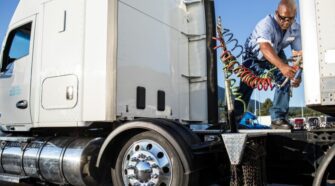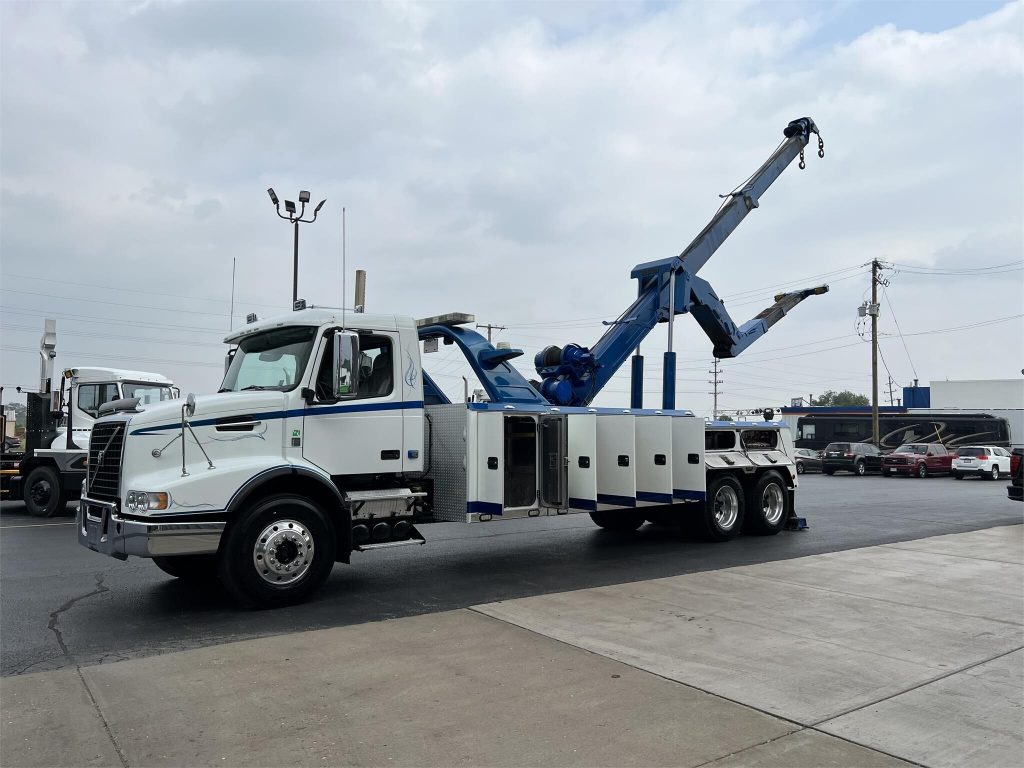

An owner-operator truck driver can make over $200,000 gross income annually, which sounds like a lot. Once you add the initial start-up and secondary trucking costs, your take-home pay can be closer to $50,000. More experienced drivers hauling specialty loads can make closer to six figures. Where does that money go? What are the typical operating costs for truck drivers?

Fixed Trucking Costs
Determining the fixed total cost involved is the first part of figuring out operating costs. Even a truck that sits in a parking lot and drives zero miles still costs something. The highest cost is the financing or regular monthly payments for the cab and trailer. Another additional cost of trucking is insurance. Insurance is necessary for the truck itself. You may also need business insurance depending on your operation and what you want to cover. Unlike other aspects of the total cost involved, these are fixed costs. Fixed costs remain the same on a regular, often monthly, basis, making them easier to budget around.
Buying a new semi-truck can range from $40,000 to $120,000, or even more if you want something high-end. If you’re buying used, you’re looking at $35,000 for something basic or around $100,000 for something mid-range. Monthly payments will depend on your interest rates and down payment, but expect around $1200 monthly.
Other fixed costs that are part of the typical operating costs for truck drivers include insurance – medical and commercial trucking insurance are necessities. Health insurance costs vary greatly depending on your age, coverage, deductibles, and other factors, but the average for an individual adult falls around $400 a month. Commercial trucking insurance can cover your truck for damages, liability, uninsured motorists, bobtails, and cargo. An owner-operator can expect to spend around $950 monthly on commercial trucking insurance. Business insurance may also be necessary, adding at least another $500 monthly.
In addition to truck payments and insurance, smaller fixed costs include permits, registrations, inspections, and licenses or renewals. Drivers must renew their CDL every four years for $60 in Illinois. Additional state and federal trucking and transportation taxes can add to the total cost of trucking. Finally, any membership fees to professional organizations or unions should be added to determine the typical operating cost for truck drivers.
Variable Cost of Trucking
Fuel is the most significant single expense included in typical operating costs for truck drivers. While the cost of diesel fluctuates regularly, the current national average is $3.79 a gallon. In 2022, the average amount truck drivers spent on fuel was $0.64 per mile. Fuel easily accounts for the highest percentage of variable trucking costs. Tolls accounted for about $0.03 per mile, but with the average trucker driving around 100,000 miles per year, that adds up quickly. Both fuel and toll costs vary depending on the region and roads.
Many highways are toll-free, and diesel in California is currently averaging at $4.76/gallon while the gulf coast is under $3.50. On the highway, there are also the costs associated with weigh stations. This only applies if your truck and cargo are over a certain weight per local regulations. If you need to use a weigh station, you can expect at least $10 for each stop.
Fuel, tolls, and even scales can be well-estimated trucking costs before you even hit the road, but less so variable costs such as repairs, maintenance, and tires. On average, truckers spend around $0.18 per mile driven on maintenance and repairs. At 100,000 driven annually, that’s $18,000 to keep the truck running smoothly.

Personal Costs
The typical operating costs for truck drivers don’t end with the truck. There are additional personal expenses on the road. Drivers need to eat, have coffee and showers, and even if they have a sleeper cab, they may want to spring for a hotel room. Laundry facilities and prime parking at truck stops can affect total operating costs.
Most truck stops, especially chains such as Love’s and Pilot/Flying J, have driver rewards programs where you can earn enough points for a free shower simply by filling the gas tank. Some highway rest stops even offer free showers. While you could probably wait until you landed a free shower, be sure to factor in the occasional $10-15 dollars if you need it. If you don’t plan a budget, food, showers, laundry, and rest can eat away at your total cost of trucking.

Adding It All Up
To determine the typical operating costs for truck drivers, add up the fixed costs of your truck payment and insurance with variable costs of fuel, tolls, permits, and paperwork. The typical operating cost in 2022, including driver wages, was $2.25 per mile. Wages accounted for $0.72, so if you are owner-operated, the total cost involved is $1.53 per mile you drive, and the rest is your salary.
Owning your truck can be a great career or lifestyle, for anyone looking to be their boss, make their schedule, have some flexibility not found in a typical 9-5, and like to drive.
Chicago’s Handshake Fleet has trucks to fit your lifestyle. We list all types of commercial trucks, including sleepers, day cabs, dump trucks, yard spotters, work trucks, dry vans, reefer vans, flatbeds, drop decks, car haulers, and dump trailers. If you have a truck to sell, we also have you covered.
Search our site
Related posts


Understanding Trucking Safety Regulations and Compliance

The Importance of Regular Maintenance for Semi Trucks


